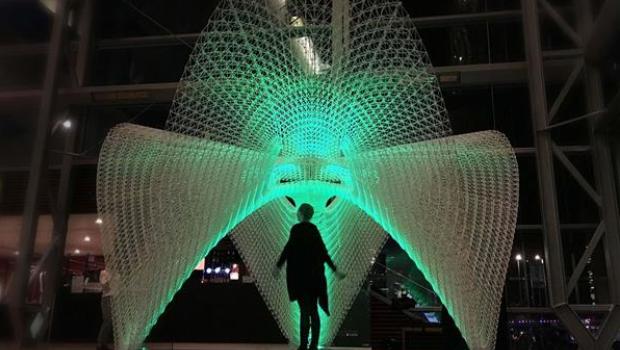Ai Build is a London-based startup that aims at using 3D printing for building astounding construction works. They have unveiled the Daedalus Pavilion, a 3D printed structure that uses techniques like robotics and algorithms.
The pavilion was unveiled as a part of the GPS Technology conference in Amsterdam. It is an impressive 5m*5 m*4.5m construction, and big enough to accommodate several coffee tables. But it looks like a mesh butterfly or a dragon fairy. It was built with more than 160 kg of a biodegradable filament which was sourced from Formfutura. It was constructed in 48 separate pieces and was 3D printed in just three weeks using a KUKA industrial robot 3D printer.
Ai Build is thrilled with the positive response and plans to go ahead with a next-gen construction, in which robotics and artificial intelligence will have a pivotal role to play. They will use 3D printing, and Ai Build intends to create a home-hub prototype that provides an intuitive and smooth home control. This platform will be operated using voice or app control, and a series of cameras and other sensors will be fed by the inhabitants to make the gesture and voice command possible. Co-founder and CEO, Daghan Cam explained to Forbes that instead of taking multiple steps to activate the device it will operate using a natural language and skill.
This ambitious startup is working relentlessly to incorporate 3D printing into their designs using robotics and software. This will help in curtailing the production time. The robotic arm has a 3.2m x 2.4m x 2.8m build space and can print huge structures with high resolution finishing opportunities using different types of PLA and ABS based materials. With features like customized extrusion path, adaptable layer heights, and extrusion thicknesses, AI Build’s vision seems to be turning into a reality.
Ai Build collaborated with the Arup Engineers of global fame to construct the Daedalus Pavilion and used the NVIDIA GPUs to improve the accuracy and speed of the 3D printing services.
Source: 3ders.org
